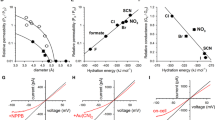Abstract.
Transport via the cystic fibrosis transmembrane conductance regulator (CFTR) is activated by its interactions with cytoplasmic cofactors, such as cAMP-activated protein kinases. CFTR activity is also known to couple to other ion channels and transporters. Although the genetic cause of human cystic fibrosis by CFTR mutations has been well established, little is known about the protein machinery that plays a role in linking the CFTR to other regulatory or ion-conducting proteins. Several regions of CFTR proteins are highly conserved among different species. The conserved motifs are thought to determine various aspects of channel and mediate interactions with other regulatory proteins. The C-termini, which are not required for functional expression of the CFTR chloride conductance, are also highly conserved. Several proteins that interact with the conserved C-terminus have now been identified. They contain several distinct protein interaction domains, which may be involved in the assembly of macromolecular CFTR channel complexes in vivo. Molecular understanding of these proteins may provide important insights into CFTR function in cystic fibrosis.
Similar content being viewed by others
Author information
Authors and Affiliations
Additional information
Electronic Publication
Rights and permissions
About this article
Cite this article
Wang, S., Li, M. Molecular studies of CFTR interacting proteins. Pflügers Arch - Eur J Physiol 443 (Suppl 1), S62–S64 (2001). https://doi.org/10.1007/s004240100646
Issue Date:
DOI: https://doi.org/10.1007/s004240100646




